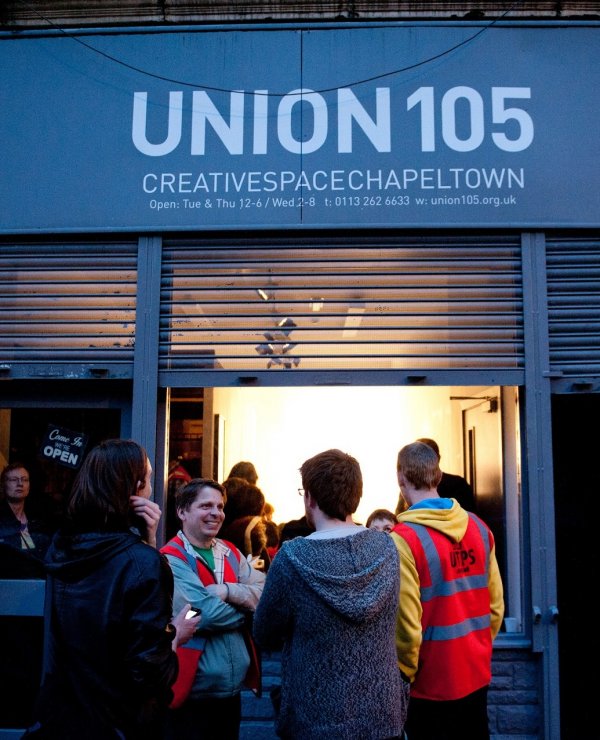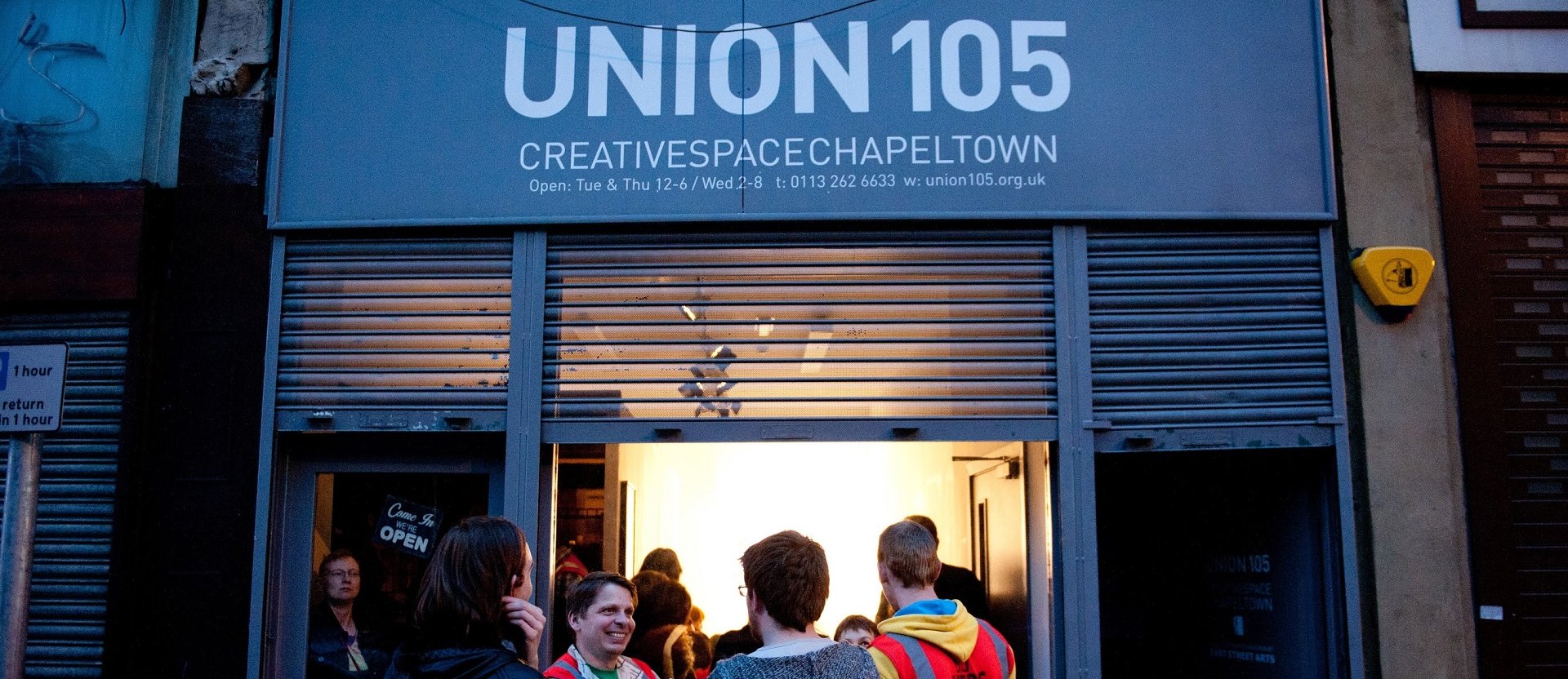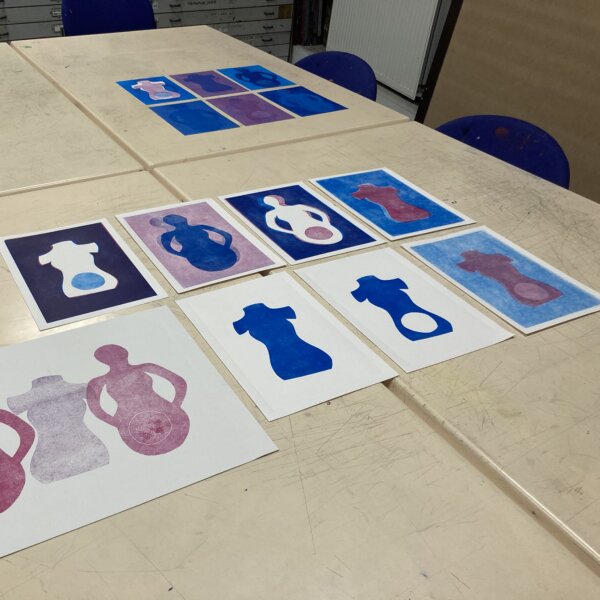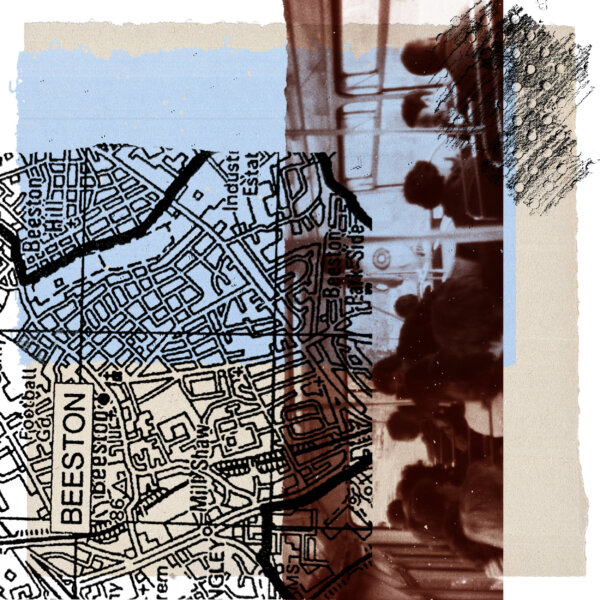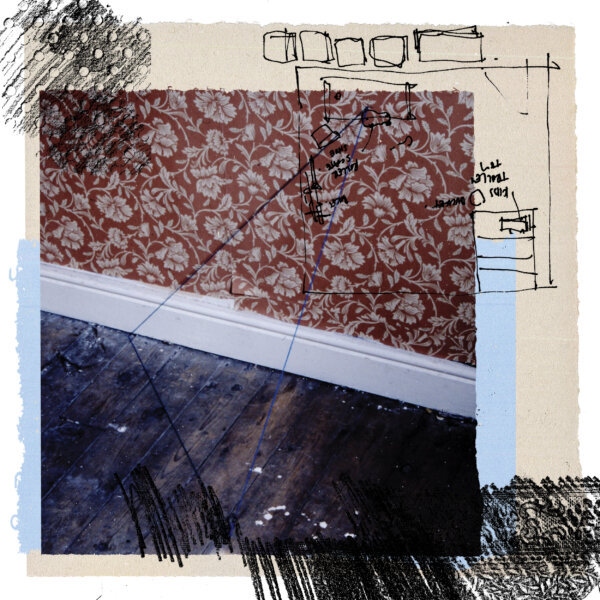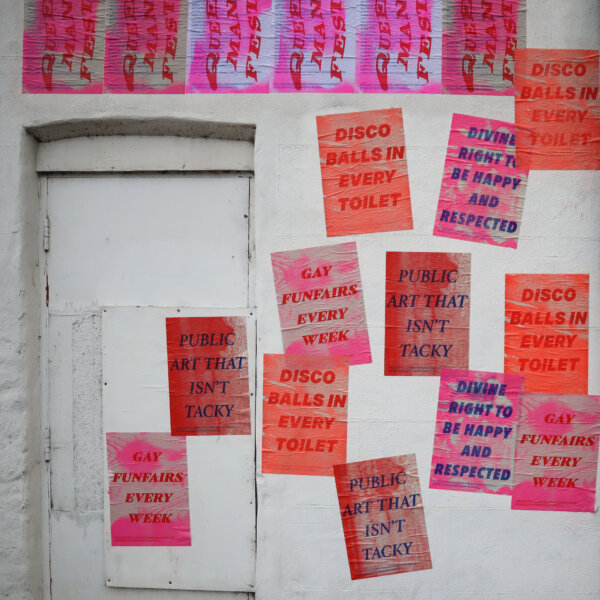With Patrick Studios making all the difference, the Directors Jon Wakeman and Karen Watson were keen to invest in another space. They realised that pulling together the same kind of financial support and partners so soon after the launch of Patrick Studios would not be easy.
But in 2009, East Street Arts began renting an Edwardian three-story house and shop on Chapeltown Road, Leeds, getting funds from Leeds City Council to refurbish it and develop a new art space.
This became Union 105, including eight studio spaces (up some very steep stairs) and accessible ground floor, project space, office and kitchen. Although the space filled with artists quickly, how the project space was to be used took a longer time to work out.
There was, rightly so, some time needed to embed the space into an area that had a lot of bad perceptions tagged to it. Chapeltown is a great place to be and it does have a rich and at times violent history.
Union 105 was launched with (Re) Locate, a sound installation by artist Tahera Aziz, responding to the tragic events surrounding the racially motivated murder of 18 year old Stephen Lawrence. This was accompanied by an exhibition at the Patrick Studios Project Space, an artist talk and an open debate in Chapeltown about racially motivated knife crime. This was significant work to launch a new space as part of a national tour.
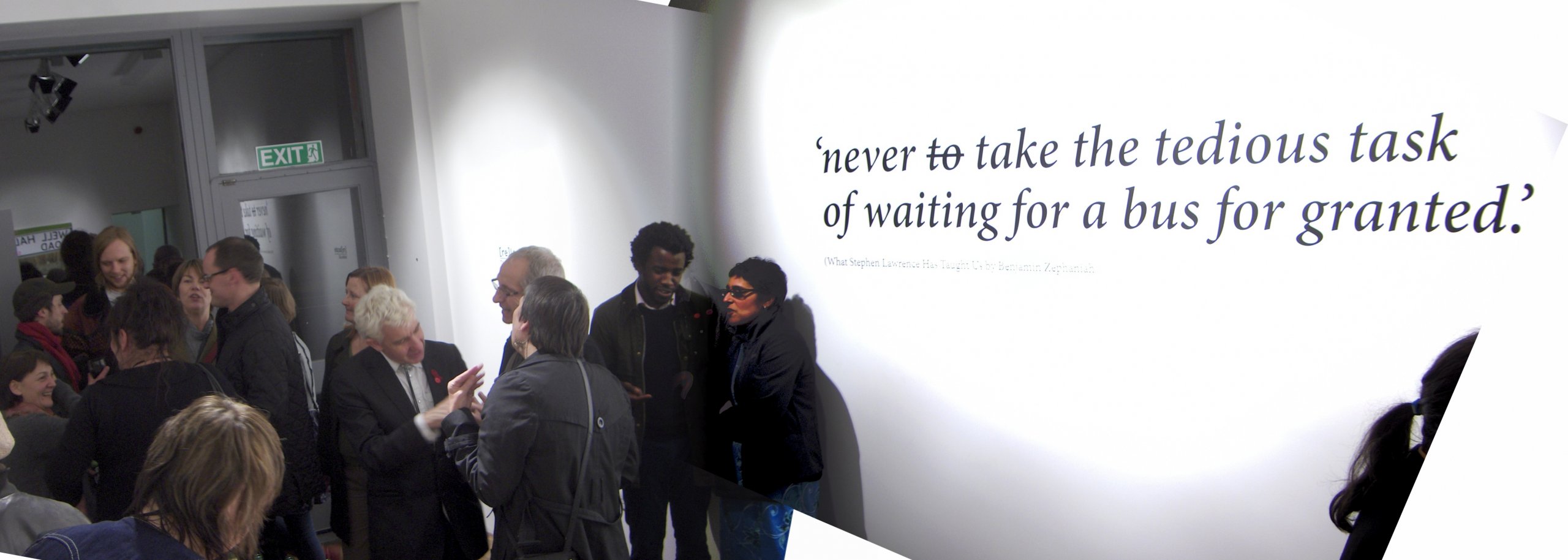
All this expanded activity required more staff, and taking advantage of the government’s Future Job scheme (basically an apprenticeship scheme with the salary paid by the government and topped up by the employer), several new staff were brought onboard, in part to help with Union 105. Several stayed on after the scheme had ended.
East Street Arts also became part of the Royal College of Art’s Inspire Placement programme focused on BAME students on the Curatorial course. Ulrika Flink was hosted for a year at Union 105.
In 2008, Karen attended a meeting called by the Arts Council bringing together many people representing visual arts in the region. They wanted to develop regional hubs to help support the visual arts and on the back of research and a publication they had carried out a few years earlier these hubs became known as Turning Point and every region set one up. At this stage Turning Point came with funding and the steering group was chaired by Beam in Wakefield. We created a statement and strategy around supporting the visual arts and commissioned various organisations, Pavilion, The Sculpture Park and others to explore events that were focused on support for the sector.
East Street Arts itself was enjoying programming activities across different venues with a wide range of partners building on what has been achieved through the Social Club programme, linking different activities under “seasons”.
Thunder in the Potty came straight after Social Club and included several events over the autumn of 2009 focused on capitalism and collective thinking, and positive thinking in relationship to crossing and closing borders and included:
- A group show by the Dortmunder Gruppe in St Johns Church.
- Enter the amazing Virginia Sohpel – A residency and installation by two artists working as a collective from Dortmund Silvia Liebig and Gudrun Kattka. Shopel in 42 New Briggate brought together the cult of shopping with the dedication demanded by religion. Supported by a series of workshops in collaboration with Leeds Gallery.
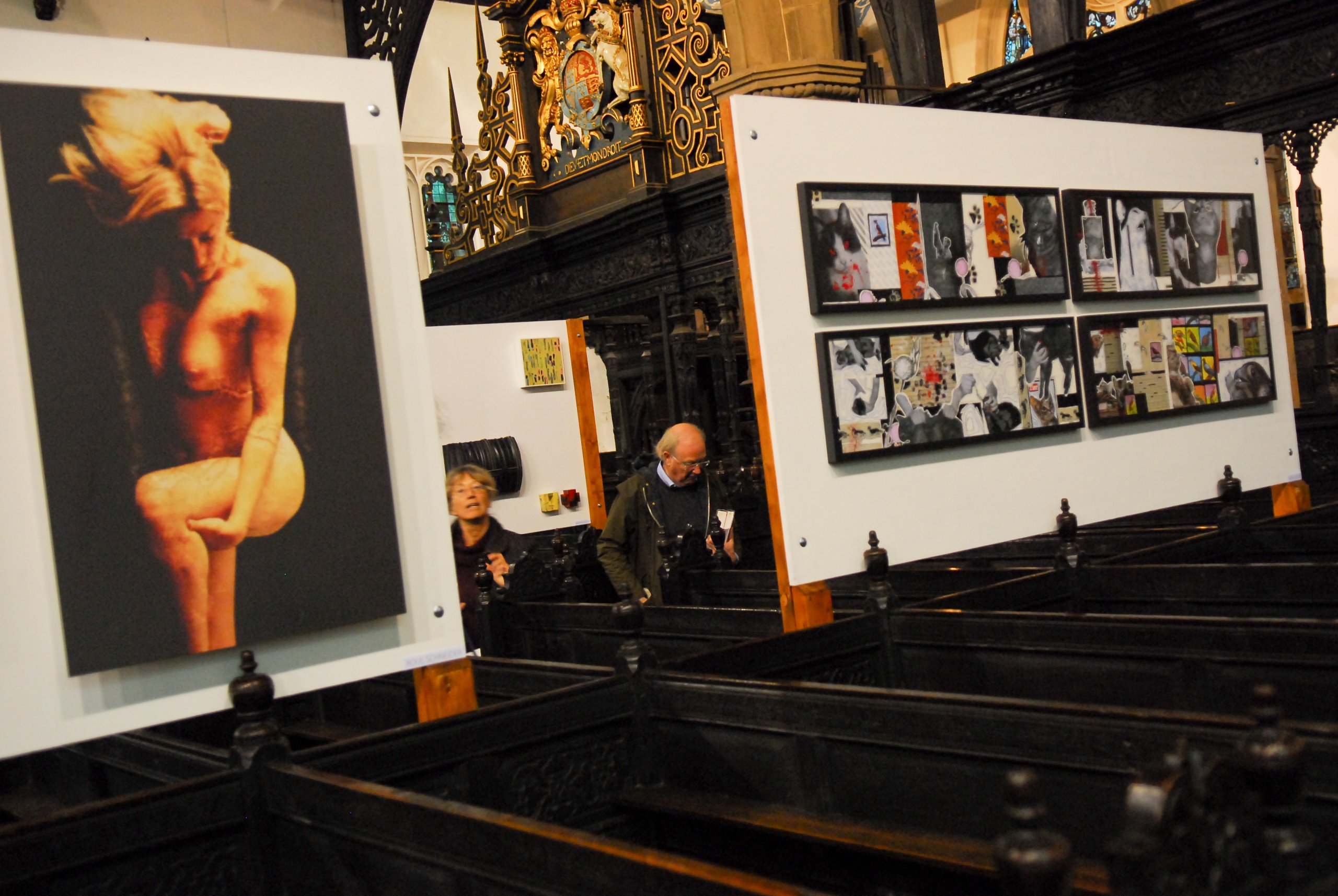
- Flows of Capital: Bodies and Borders. Curator Amy Charlesworth presented work in Patrick Studios Project Space of Ursula Biemann from Switzerland and Jesper Nordahl from Sweden examining the relationship between co-dependent aspects of capital in the neo-liberal economic model.
- Studio Holder Jo Lee was commissioned to develop a new piece of work presented in Leeds City Museum and was made in collaboration with various care homes as part of International Day Of Older People and also included a symposium about working with older generations.
- ‘I am Leeds’ was a group show the team took to the Amsterdam Biennale by Media Matic. ‘Because it wasn’t there before’ presented the underground art scene from all over the world. Artists Megan smith, No fixed abode, and Silvia Liebig filled our small allocation of space alongside Jon’s mobile Bloody Mary bar and adopted Table Tennis table.
- (Re)Locate by Tahera Aziz.
- Input = Output by Simeon Barclay and part of Black History Month. Inspired by Henry Box Brown and his journey from Bradford to Leeds in a box (itself a re-enactment of his escape from enslavement) this installation included a re-enactment of the journey.
Over Yonder followed and was a series of events that linked West Yorkshire and Rhur Valley in celebration of twinning and long-term relationships built over many years between these two areas.
This event was termed as the last Social Club event bringing the series to an end with a party that also included three publications, a specially brewed beer and the last Socialist Jukebox event. Over Yonder included:
- Snap into Place at Dean Clough Galleries, Halifax – an exhibition that was a result of sharing fifty disposable cameras across West Yorkshire and the Rhur Valley. People took a photograph that represented themselves and then passed the camera on to someone they knew.
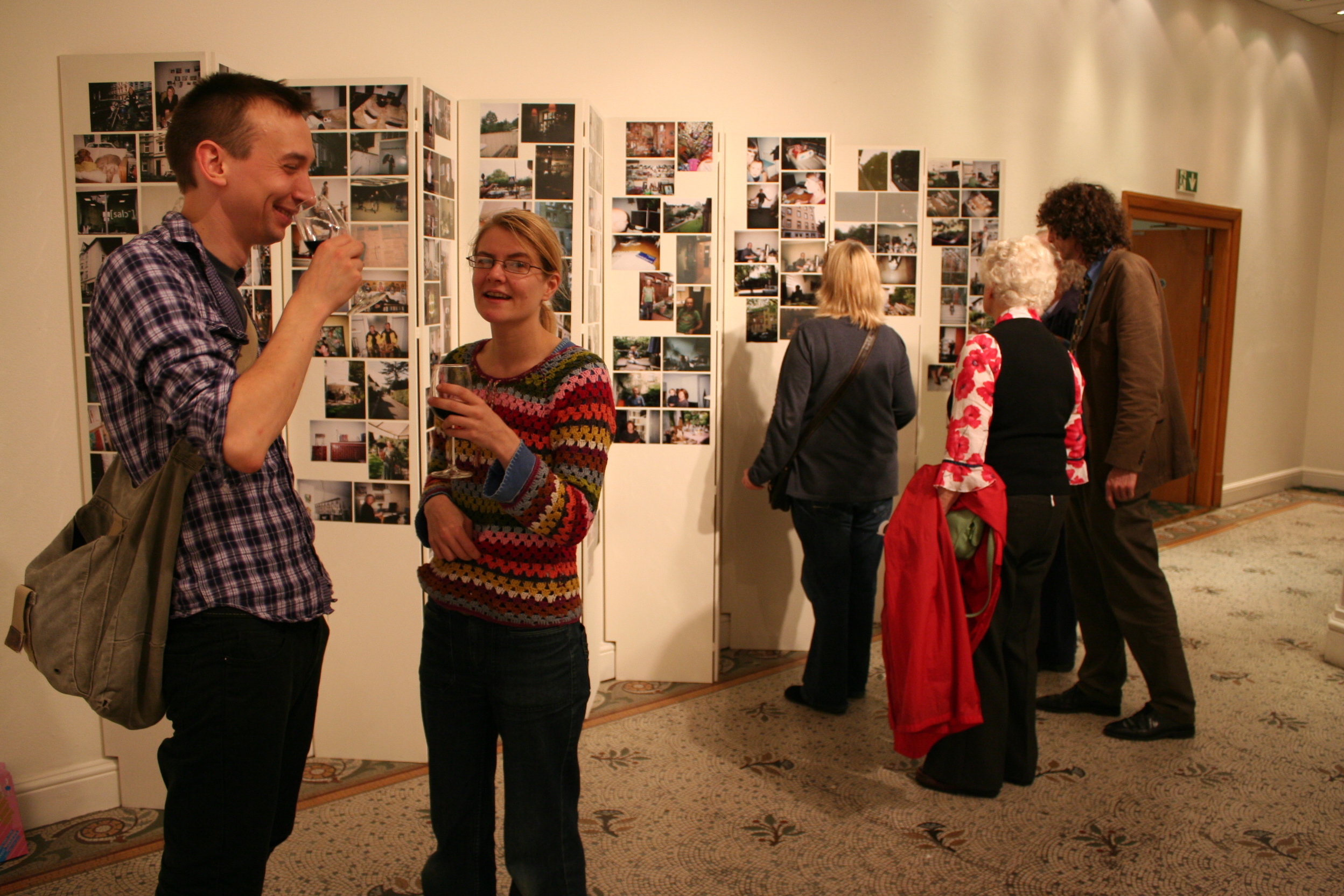
- Snap into Place at Dean Clough Galleries, Halifax – an exhibition that was a result of sharing fifty disposable cameras across West Yorkshire and the Rhur Valley. People took a photograph that represented themselves and then passed the camera on to someone they knew.
- Over Here Over There by artist Graeme Murrell developed a walk from Leeds to Huddersfield that actually followed twinned cities Dortmund and Uno. This also resulted in a very large light box image in Dusseldorf Airport.
- Boateier – Artists collective Contents May Vary residency on a barge on the Rochdale canal. During a week on board they invited an artist everyday to come and interact with them and audiences at different stops along the canal. An exhibition to bring the work together took place at Union 105.
- Urban Icons by Alex Dunn at Union 105 – A photography exhibition by artist and owner of a sandwich shop in Harehills twinned to a Caribbean shop in Chapeltown. The portraits put the spotlight on everyday people.
- Open Window In City by Megan Smith – Although an everyday occurrence now at the time Megan was pushing the boundaries of digital technologies. A large projection in a shop window in the City centre gave passer-byes the opportunity to wave and interact with Dortmunders linking two streets.
- Navicula Obscura by Steve Raynor who turned is barge on the Leeds Liverpool canal into a floating pin camera. Large scale photographs were exhibited at the corn Exchange.
- Spy Box by Tim Knowles and in partnership with The Art House and the Art Walk. A parcel with a hidden camera was posted from Leeds to Halifax to Wakefield and an animation was created and shown at The Art House.
- Poor Pattern by Silvia Liebig from Dortmund – This installation included a wallpaper designed by the artists based on photographs of invisible and marginalised groups. Hosted by the Corn Exchange the opening also included a performance by a Socialist Poet (Mick Artistic).
- From West to North to East to south and back – Six performances by Helen Pritchard in collaboration with Compass. First presented as part of Sonic Peripheries in Bremen, Germany; and also included a lecture by Graeme Murrell based on the walk from Leeds to Huddersfield.
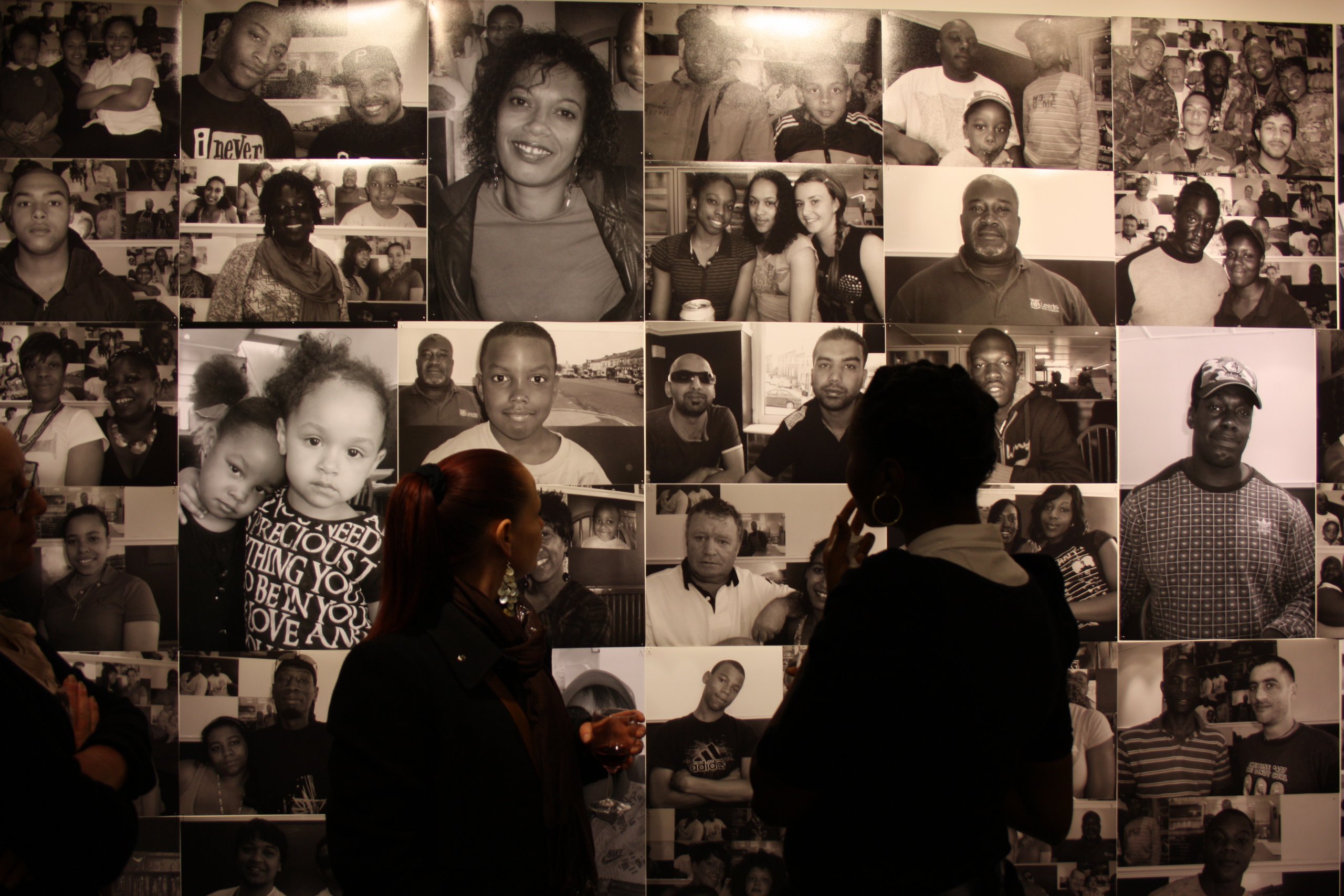
During Over Yonder artist Chris Woodward joined the group on the walk to Huddersfield and his collective Woolgather became an important part to future programming.
In 2010, a week-long mini-festival along Chapeltown Road, Leeds called Under The Paving Stones was launched. It built on the exciting work being done in the new Union 105 space and aimed to reach a wider audience with projects including:
- Dundee based artist collective Ganghut, fresh from their piece for Glasgow International, set up a new social club in the old library and reanimated through games, food and social events. Entitled Time, Luck Skill the event mixed old classics and new creations of gaming.
- Invisible Flock, a collective based at Patrick Studios developed Your government has gone to Sleep, an interactive piece which included a mobile phone box taking calls along Chapeltown Road. For one week Invisible flock declared Chapeltown a free republic and asked what is your revolution for Chapeltown? Some actions also came out of this, for example a litter picking day.
- Belfast based Our Ideas are Everywhere set up a secret lodge in a specially built shed in the grounds of Bauman Lyons Architects and explored the myth of UFO’s, aliens and the occult in Chapeltown. People could visit the lodge for podcasts, tarot readings and family events.
- Chapeltown based artist Benedict Philips developed his piece Chapeltown Standard – a standard mark available to people living ad or working in Chapeltown as a sign of quality. Developed only through conversations with people and these conversations turned into private collaborative dinners in order to progress the idea further.
- Leeds based Sarah Spanton worked with local organisations to create a music video, Verse (Voices&Vistas) evoking the diverse experiences of leisure and play in the neighbourhood. A specially constructed cinema enables small groups of people to watch the result and visit an exhibition at Host Media Centre.
- A newly formed group bringing Leeds artists and tutors/students from York university called Chapeltown Union of Psychogeographers (CUP) created a newspaper specially for Chapeltown, and a series of billboard hoardings
- Portuguese artist and instigator of the Art World Cup Nuno Sacromento launched his and his colleague’s Claudia Zeiske new book ARTocracy and East Street Arts kicked the whole event off with a symposium/public discussion about the relationships between public space and public art based in the Ukranian centre and open to anyone. David Harding and Franco Bianchini were the speakers and the following discussion was chaired by Roddy Hunter.
Juliana’s Bike was a significant project that built on East Street Art’s support for artist Juliana Belente. Juliana is from Argentina and when she arrived in Leeds she could not speak English – by the time she left she was being invited to do a PhD at Leeds University. She decided not to do a PhD and started volunteering for East Street Arts while she decided what was next. The next move was to return to Argentina which was a great loss for arts in Leeds.
In exchange for the voluntary work she did it was agreed that a project would be developed that had a social function. Juliana’s Bike was created, using the expertise of Tim [surname?], a bike frame donated by Dave Lynch, ending up with a single bed hostel complete with wood stove, desk, bed and kettle! A festival was developed around the vehicle, exploring pedal power and social connection, including:
- The Adventures of Don Quixote by Bicycle – an interactive performance by Burn the Curtain. Participants followed the classic story of Don Quixote on their amazing horisicycles around the grounds at Temple Newsam Park.
- Rider Spoke by Blast Theory invited participants to join in a journey through the streets of Leeds. Following instructions from a small portable computer participants are invited to leave thoughts at specific locations across the city for others to discover.
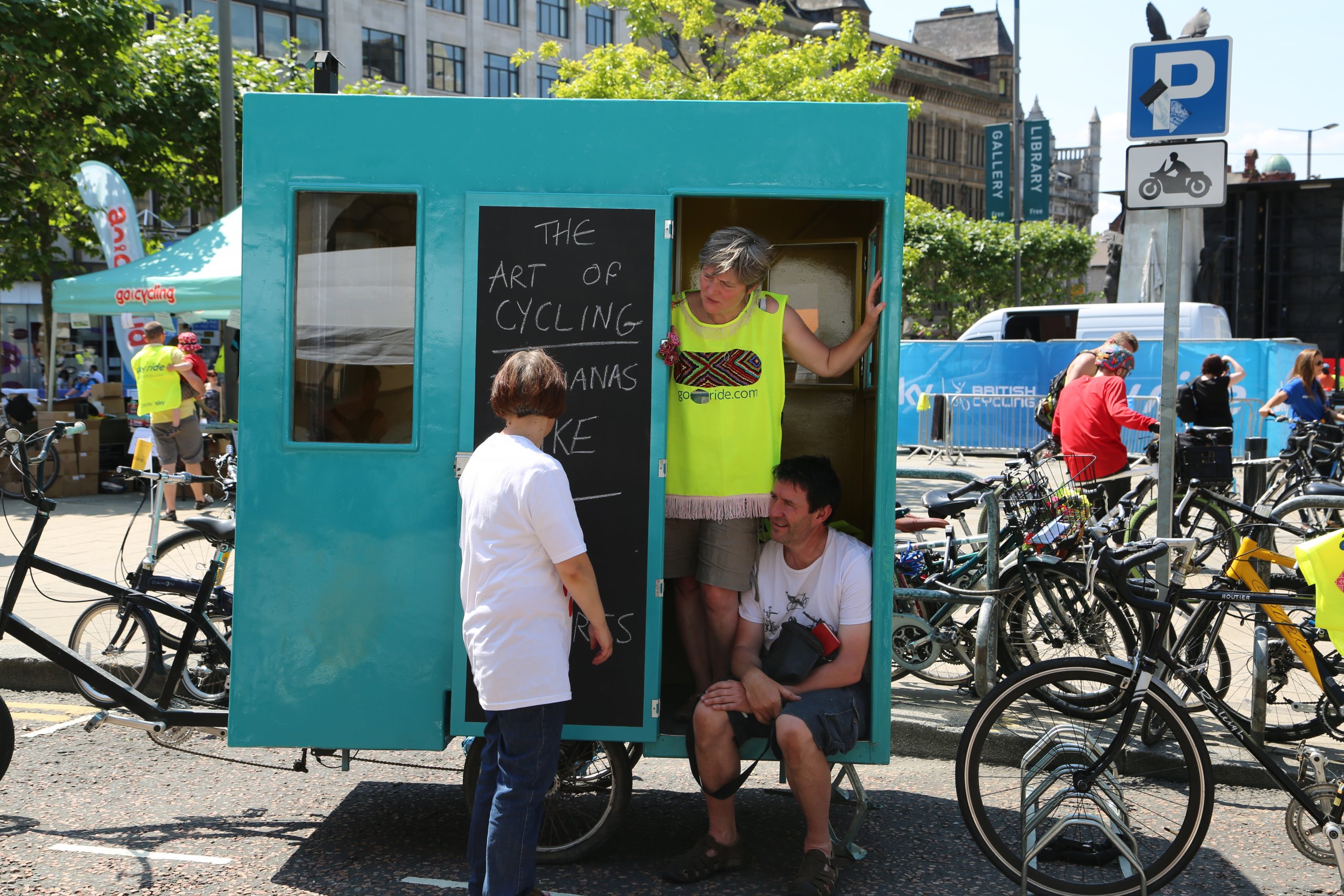
- Citizen Bike by Adam Young invited participants to collectively clock up the 2,115 miles of the Tour de France on his adapted exercise bike in Trinity Shopping Centre.
- I came, I saw, I bicycled– a group exhibition at the Corn exchange and Reliance by Thomas Hoare, Daniel Lane, Andrew Lister, Fiona Stuart- Clark, Sam Lee, Eliza Southwood and Kasia Breska.
- Artist Dave Lynch was Juliana’s Bike artist in residency throughout the festival exploring connections to science, environment and art.
- Juliana’s bike residencies included artists staying in the one-bed room hostel and developing workshops or new work and included artist Bess Martin.
- CycloGeographic – artists Paul Hurley and Caleb Parkin initiate a series of creative cycle explorations of Leeds fuelled by prompts and provocations.
- Night Ride – A duration challenge for unprofessional Leeds cyclists that became a pop-up cyclist club for a night and cycled from Leeds to Hornsea and arrived at Kingston Art Studios for breakfast.
- On Your Bike with artist Sohail Khan working with young people at The Works Skate Park in Kitson exploring their relationship with bikes.
- I Want To Ride my Bicycle brought together by Vikki Chapman – Led by professional singing coach Isolde Freeth-Hale an open invitation to join a pop-up choir and to perform throughout the festival.
- Pedal Power chariot Racing – Graeme Marks created bike chariots and invited people to test them out throughout the festival.
- A Toolkit for City Cycling – a free workshop by Pedaller’s Arms for anyone wanting to know more about bike maintenance.
- Seacroft Gala – Hosted a BMX course alongside an urban art wall for families and young people.
- Culture Generator – Hosted by Rayon Rose and Electric Pedals a day in Inkwell’s garden offered courses on how to make a bike – powered generator and get involved in a range of pedal-powered events including bingo.
Outside of these projects, there were several other key events East Street Arts was involved with, like the launch of Compass.
Responding to a call from Arts Council England for applications from arts organisations or collectives to develop a strategic approach to live art in the region, Karen, Annie Lloyd and Sarah Spanton created a new collective, Compass, and applied. Initially working semi-independently in the first incarnation with infrastructure support from East Street Arts.
Sarah developed a range of events focused on professional support for Live Artists that culminated in an international Symposium. Annie developed a week long festival in Leeds and East Street Arts worked with emerging artists in Hull, Leeds, York and Sheffield to create a series of one-night performances.
The events were successful in reaching the aims set out – to show a diverse range of Live Art, strengthen the sector in Yorkshire and explore the need for a specific art form ‘agency’. From this development East Street Arts included Compass as part of its regular funding applications to the Arts Council for three years and a new Live Art Festival was launched. Compass is now an independent charity headed up by Annie Lloyd and Peter Reid and is an established part of the region’s art scene – maybe doing what Situation Leeds never had a chance to do.
There was also the launch of Insitu at this time. East Street Arts was approached by Paul Hammond who was setting up a company that helped charities find empty property based on meanwhile use. Richard Wheeter who at that time was running Wakefield Westgate Studios made the introduction and initial agreements saw East Street Arts take several empty spaces in a shopping centre, the Ridings in Wakefield in collaboration with Richard. The concept is that as a charity we could take on the spaces, develop them into temporary exhibitions spaces, which cities are very short of, support artists to show their work and animate the spaces. In return the businesses that own the spaces donate funds to the charity to be able to manage the project and put funds into the artists and their projects.
The first attempt was a bit of a disaster and there was too much complexity between two artists groups, the management of the shopping centre, Paul Hammond, the owner and the people paid to market the empty spaces. Some good events were run but it was short-lived.
A second attempt was made with a grade A listed office block in Leeds city centre Dyson Chambers. Exhibitions, debates, window installations, rehearsals and community based meetings all took place in this space and increasingly others were offered.
For a short period of time, there was a shop on Bond Street, Leeds that the collective Woolgather took over and initiated their very successful Woolgather Art Prize showing work by a really wide range of artists from all over the world. Insitu, although it’s name changed to Temporary Space Programme, enabled the development of several staff posts to manage the programme and support hundreds of artists on an increasingly national basis.
And that wasn’t everything from this insanely productive period for the organisation, these are some of the other projects of note from the era:
- United: a Social Club commission and residency for artist Daniel Lehan based in Stroud. He spent time in Leeds bringing together a collection of creative happenings asking what unites artists. You can still see golden circles on various cultural venues with remnants from this event and a public art piece at Barkston that states ‘The thing we do on the day unites us’.
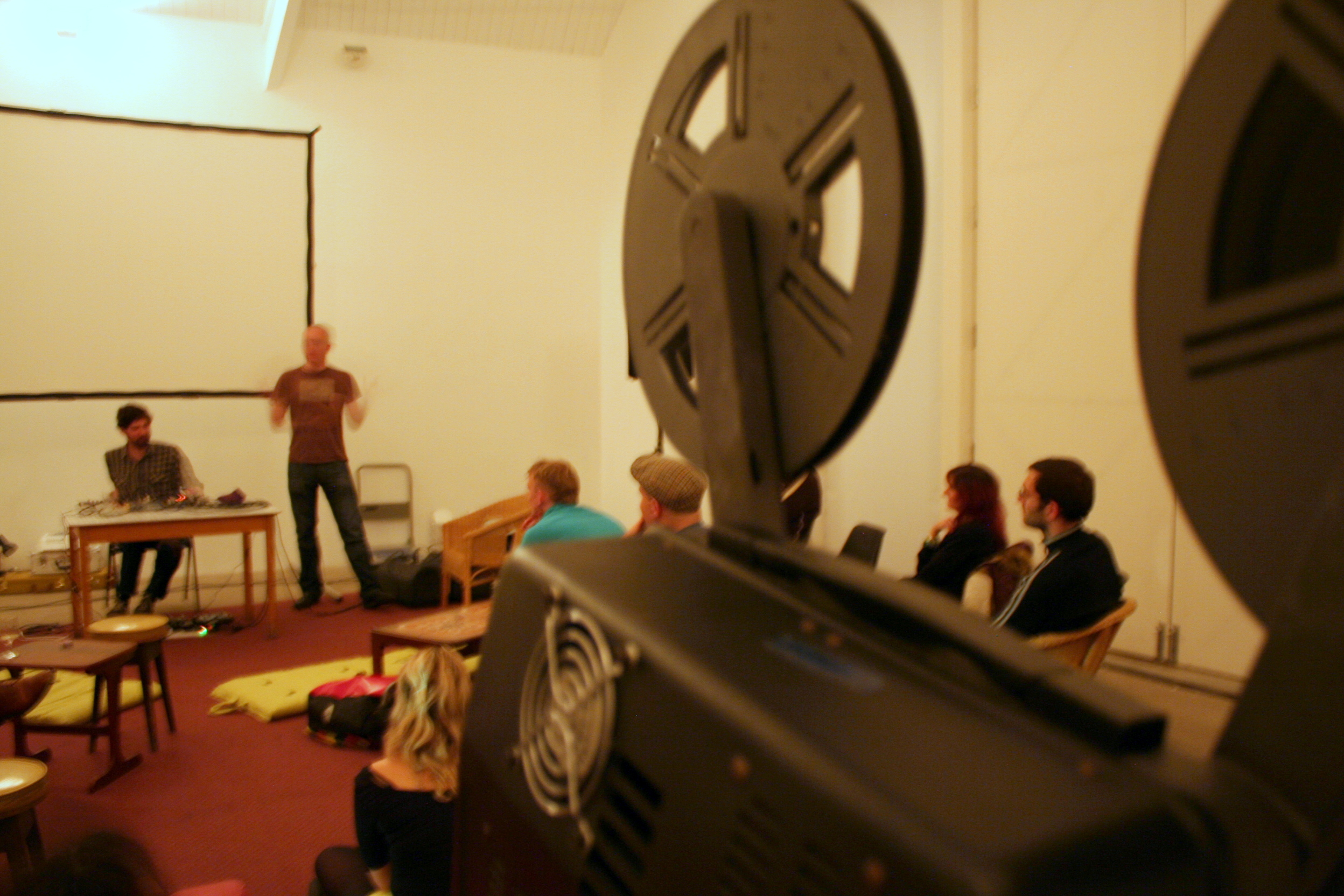
- Cherry Kino: an independent organisation that made things happen with experimental analogue film.
- Common all – a week long event in collaboration with Live Art Bistro, The Comm(o)nist Gallery and artist Alice Bradshaw celebrating all that is good and bad with
- (In) xlusion: A 24 hour take over of Patrick Studios by Live Art Bistro. This was a truly embracing event that we were privileged to host. Artists from all over the world came to perform over the 24 hours in every corner of the building. The stairs, meeting rooms, project space, kitchen, toilets, corridors and some studios were all made use of and we witnessed a whole range of challenging, engaging and exciting performances. The Woolgather trio also set off to drive around the country finding 24 East Streets. Her journey was live streamed with them making it back just in time for the closing event!
- Research trips during this period included the Berlin Biennale, Lille 3000 and Rotterdam and Amsterdam.
Related posts
-
News
Leeds Creative Labs Follow on Fund: Herfa Martina Thompson Dr Zoe Tongue
Visual artist Herfa Martina Thompson and Law lecturer Dr Zoe Tongue first collaborated as part of Leeds Creative Labs, a programme that partners artists and academics, initiated by the University of Leeds’ Cultural Institute and facilitated in partnership with East Street Arts.
-
History
Listen to the Sounds of New Briggate
Sounds of New Briggate is our podcast series - hosted by local people, telling local stories - which celebrates New Briggate, a unique and vibrant high street in the heart of Leeds.
-
Artist support
No Going Back exhibition
No Going Back explores the role of art and artists in the city and civic practice, through the lens of East Street Arts’ archive.
-
Artist support
New exhibition explores the role of artists in our cities
A new exhibition exploring the role of art and artists in our cities and civic practice, through the lens of our East Street Arts archive.
-
Artist support
Housing: Can artists offer a different perspective?
Artists and activists get together to present their work and experience on setting up collectively owned spaces, artist-led houses and documenting change in a city of disappearing houses and public spaces.
-
News
New Briggate artworks call for a brighter, safer and queerer future
This LGBT+ History Month, performance artist, writer and radical creator Harry Clayton-Wright shares a manifesto for a brighter, safer and queerer future.

